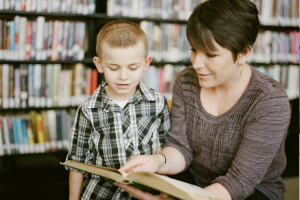How to Help Your Child Get Things Done (Without a Fight)
 Many parents struggle with repeated conflicts with their kids. One moment may be about getting homework done, and the next may be about picking up clothes off the floor or getting off the computer. While the subject changes, the struggles are the same. Simply put, the topic has changed, but the process repeats. Your child is being asked to do something they don’t want to do, and they push back. This is what I call “Whack-a-mole.”
Many parents struggle with repeated conflicts with their kids. One moment may be about getting homework done, and the next may be about picking up clothes off the floor or getting off the computer. While the subject changes, the struggles are the same. Simply put, the topic has changed, but the process repeats. Your child is being asked to do something they don’t want to do, and they push back. This is what I call “Whack-a-mole.”
Life is full of things we don’t want to do, and it is essential that your child learn how to do them anyway. This is a critical part of growth and development. We want our children to manage, develop grit, build resilience, and figure out how to do things that are boring, difficult, or not their preference. This can be a tall order. It may be easier to just get through a rough patch by fixing or punishing, but this approach doesn’t prevent the next episode.
Instead of being consumed by the immediate problem, it is important to widen your perspective to consider what is prompting these difficult moments. After all, if your child could manage it better, they would! Being upset, frustrated and at odds with their parents is probably not your kid’s first choice for how they want to spend their time. Rather than continue with this cycle, something needs to change.
In reality, the difficulties around chores, homework, or other “non-compliant” behavior share the same underlying challenge: understanding and managing emotions sufficiently to figure out how to do hard or unpreferred things. When your attention and efforts are oriented toward the difficulty at hand to get it done and get on with your day, you are unwittingly participating in a game of “Whack-a-Mole.” You may believe that the distress/conflict or drama itself will teach your child to “not do it again” or if you give out a punishment as a consequence for disrespectful or irresponsible behavior, they will “learn.”
The mistake here is that while the problem looks like homework, chores, doing what is asked of him, etc., the real challenge is your child isn’t self-aware enough to regulate his emotions sufficiently to engage in effective problem-solving and they need your help to figure it out. Going from one conflict to the next doesn’t teach them how to better approach the next situation.
Self-awareness, emotional regulation, and emotional intelligence are not grown in the moment of crisis. They are not grown in the context of conflict, defensiveness, punishment or yelling. They are also not grown by rescuing or just moving from one upset to the next. Rather, when challenges arise, these moments are best seen as opportunities to discover where the breakdown occurred so the challenges can be identified and better approaches explored.
When you shift your perspective to consider that there is a gap in your child’s understanding and management of the energy and information of their emotions, a new door opens for dealing with these battles. However, for most parents is it is likely you haven’t had explicit teaching on how emotion regulation can be developed. You probably aren’t even aware of how you manage. Growing emotional regulation comes from an awareness of self. Learning about oneself is like learning any new skill. It requires guidance and encouragement.
Connect to Your Child
To make this shift, you as the parent must first connect. Connecting means to take a step back and open up space for curiosity and then respectful exploration. To set the stage for this, your child needs to feel safe, calm, and trusting that you are on his side. This stance opens the door to learning and shifts the dynamic from you being the bad guy your child wants to avoid, to being the supportive figure you want to be and they need you to be.
Help Your Child Explore
When connection is in place, you can help your child explore their experience. Breaking apart the challenge they are facing helps them learn about themselves. There are many things for them to discover about themselves, including their vulnerabilities, thoughts/intensions, memories, interpretations, urges, emotions and body sensations and how all this adds up to the to the unpleasant and problematic results they are getting.
To support your child learning to reflect on and then grow their capacity to manage themselves better, you begin to explore questions together like: Do you think you might have been hungry or tired making it harder to manage? How did you see the situation/challenge? What emotions did you have? Were you aware of how your body felt when that was going on? How did it go for you when you took that approach? These questions help your child grow self-awareness, and it will help you acknowledge that their struggle makes sense from their perspective starts you both on a new path together.
Figure Out a Path Forward
From here, you can think together about how to manage in the future to get a better outcome. As questions get explored, different options emerge for managing. If there is a challenge with sleep or food, that can come into focus as a place where your child can consider their bedtime or eating habits. If the difficulty is coming from misinterpretations, misunderstandings, memories, judgements, or lack of perspective taking, your conversation can introduce other ways to think about the situation.
When it is an emotion that gets too big too fast, options to manage can be identified and practiced such as taking a break or putting cold water on their face to bring the intensity down. Also, learning to name the emotion is helpful to making sense of the difficulties. Overall, questioning an unfortunate outcome usually provides the motivation to practice something different so things go differently the next time. This is how the “Whacka-Mole” cycle begins to shift.
Like learning anything new, this is a process. There are going to be mistakes along the way, and these mistakes become the next opportunity for connection and reflection. This is not a quick fix. Emotional learning, regulation, and emotional intelligence are developed over time and with practice. Consider how your child learned to tie her shoes and learned to read. These skills were explicitly taught. They were broken down into small steps and when challenges encountered, different approaches were introduced.
Then there is practice, practice, and practice until it becomes easy. The same applies to building emotional regulation capacity. There are several simple rules to follow: you must first connect with your child if your child is to shift out of defensiveness. This means you have to drop your anger to create a safe, curious, open conversation. Once safety and connection are in place, you can help your child reflect on what she is experiencing. This reflection allows her to notice what is prompting her resistant, or other “non-compliant” or challenging behavior. Once this is brought into focus for both you and your child, you can support her in figuring out a better path forward. Finally, as you move through this process, you can celebrate each step along the way. It is important to water what you want to grow. With these steps, you can move beyond the unending and unpleasant “Whack-a-Mole” you and your child have found yourself in.
Tags: child development, defiance in kids, discipline, fighting with your kids, handling defiance, helping your kids, how to stop arguing with your kids, pareniting, parenting, parenting advice, parenting tips, stubbornness in kids, tips for parents







